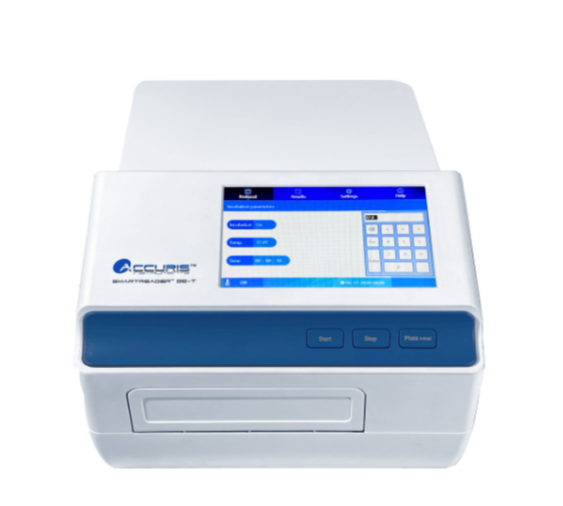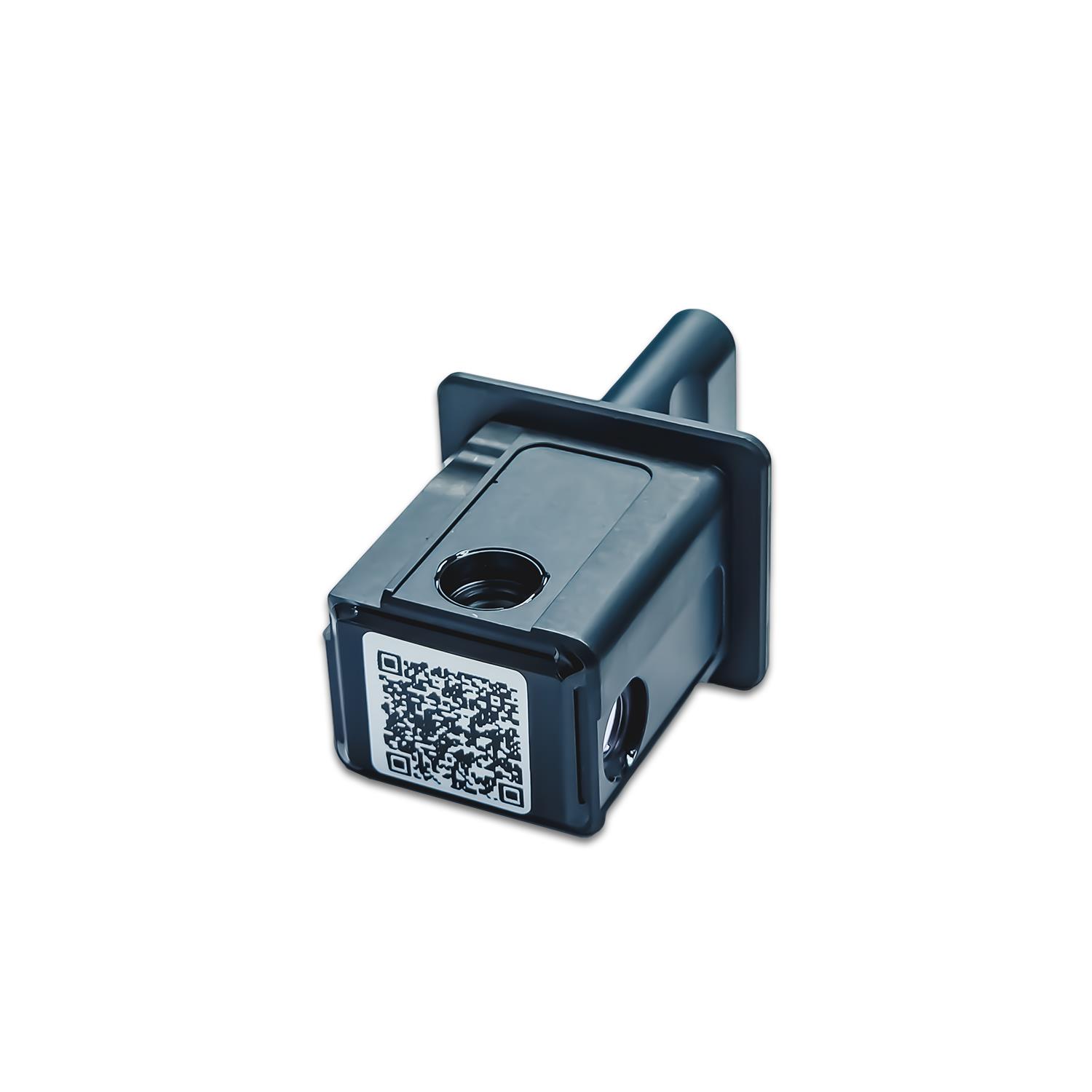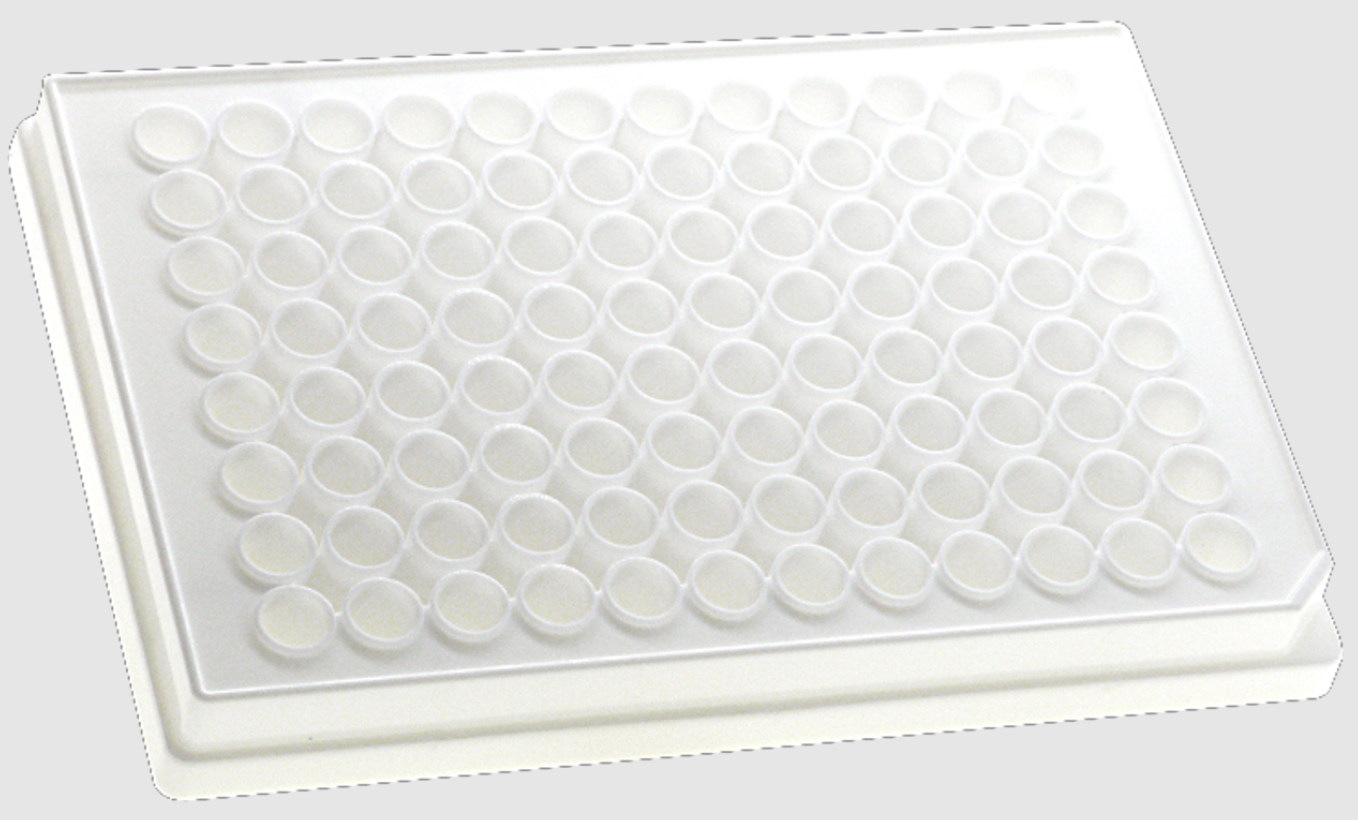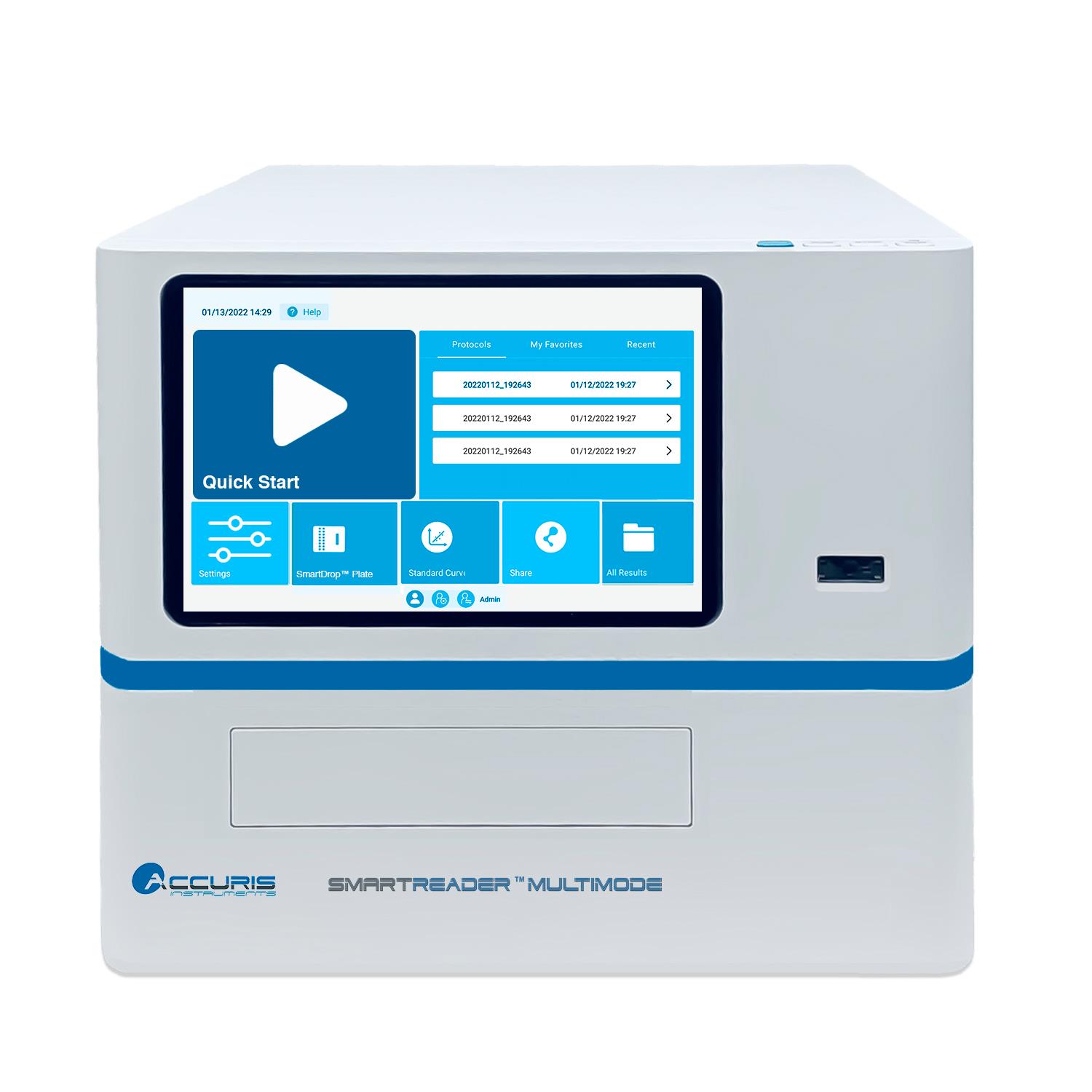Once upon a time, glass test tubes were the
only laboratory tools available for conducting colorimetric assays.
The invention of the microplate, or microtiter plate in the early 1950’s helped launch a high-throughput screening revolution as more samples could be handled and processed together.
While packing ninety-six or more samples together in a compact vessel saves space and improves sample loading efficiency, a special device is required that can simultaneously read and quickly interpret multiple data points at once.
A microplate reader is an analytical instrument designed for performing colorimetric assays using a light source and samples in a microplate.
The type of assay to be conducted determines the type of light to be emitted as well as the construction of the microplate where the samples are stored.
The most basic type of microplate reader detects absorbance of light using a combination of visible light paired with filters of a specific wavelength.
The Accuris Instruments PR9600 is an excellent example of an absorbance microplate reader.

The PR9600 is for 96 well experiments like ELISA and Bradford assays which are performed using clear polystyrene microplates.
This microplate reader comes with four of the most popular filters pre-installed (405,450,492,630nm) with another twenty-three optional filters that cover almost the entire visible light spectrum.
Absorbance microplate readers work by beaming a path of light through the sample and reading the amount of light that is blocked at specific wavelengths.
For this reason, the sample needs to be placed in a super clear vessel like a polystyrene microplate or cuvette (see our recent article about clean cuvettes)
Fluorescence and luminescence assays are done by reading the amount of light emitted by a bioluminescence material that has been added to the sample.
Microplate readers for performing fluorescence assays use light cubes to beam a specific wavelength that causes the luminescent matter to glow. The intensity of this glow is then read by detectors and translated into data.

Microplate readers for luminescent assays have dark chambers that emit no light. As the bioluminescent material glows, photon multiplying sensors increase the signal strength and record this data.
Microplates used with fluorescence assays have carbon added which colors them a dark black.

Microplates used with luminescence assays have titanium dioxide added that colors them white.
White wells amplify weak luminescence signals to become more readable by the photomultiplier sensor.

There was once a time when a lab would need to purchase a separate microplate reader to perform all three different functions.
It is now possible for a microplate reader to be packed with all the sensors and light sources in a single unit.

The Accuris MR9620 microplate reader is loaded with convenient features.
Most significantly, the Accuris MR9620 microplate reader has been validated for BOTH research and diagnostic work (must purchase FDA 21 CFR Part 11 compliant version).
Stellar Scientific is an authorized distributor of Accuris Instruments microplate readers and a recognized supplier of premium quality microplates.


